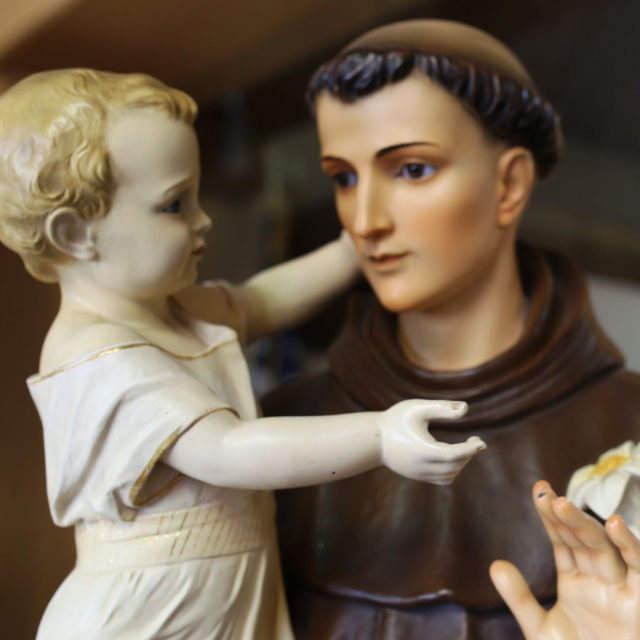Every January 17, Spain celebrates one of its most beloved and ancient traditions: Saint Anthony's Day, the patron saint of animals. This holiday, full of symbolism and devotion, unites communities across the country around respect and care for animals.
Origin and Meaning of San Antón
Saint Anthony, also known as Saint Anthony the Abbot, was a hermit born in Egypt in the 3rd century. He is recognized as the father of Christian monasticism and a figure of profound spirituality. His life was marked by devotion to prayer, sacrifice and love for nature and animals.
Saint Anthony's relationship with animals stems from numerous stories that describe him as a protector of creatures. During his lifetime, Saint Anthony is said to have healed and cared for many injured or sick animals, earning him his reputation as a patron saint of animals. The celebration of Saint Anthony's Day is deeply rooted in Spanish culture, especially in rural communities, where animals have always played an essential role in the daily lives and livelihoods of families.
Traditions of Saint Anthony's Day
The Blessing of the Animals
One of the most iconic traditions of Saint Anthony's Day is the blessing of animals. In this ritual, people bring their pets and farm animals to churches to receive the protection of the saint. This ceremony has a deep spiritual meaning, as it symbolizes care and respect for all forms of life.
In large cities like Madrid, the Parish of San Antón becomes the epicentre of this tradition. Hundreds of people come with their dogs, cats, rabbits, birds and even less common animals like reptiles or horses. Priests sprinkle the animals with holy water while reciting prayers for their health and well-being.
The turns of San Anton
Another popular custom is "da las vueltas a San Antón" (going around San Anton). In this ritual, people and their animals go through the streets near the church in procession in honor of the saint. This act has both religious and folkloric roots and is a way of asking for protection and good fortune for the animals during the year.
The Bonfires of San Antón
In many Spanish towns, such as the regions of Castilla-La Mancha and Andalusia, bonfires are a central element of the celebration. These bonfires symbolize purification and protection from evil. Around the bonfires, people gather to sing, dance and share traditional foods.
In some places, "fire jumping" is also practiced, where people or even horses jump over the flames as an act of bravery and devotion. This ritual is considered an act of purification for both animals and people.
Typical Pastry: San Antón's Buns
Gastronomy also plays an important role in this holiday. "San Anton buns" are a speciality prepared exclusively for this occasion. These sweets, which often contain anise and other aromatic ingredients, are made in many homes and bakeries. According to tradition, these buns have protective properties and are used to bless both animals and people.
Celebrations in different regions of Spain
Although Saint Anthony's Day is celebrated throughout Spain, each region has its own peculiarities that enrich this festivity.
Madrid
In Madrid, the Parish of San Antón is the nerve centre of celebrations. In addition to the blessing of the animals, special masses, processions and cultural events are organised. In the nearby streets, vendors sell religious objects and traditional San Antón bread rolls.
Castile and Leon
In rural areas of Castile and Leon, bonfires are the main attraction. Communities gather around the fire to celebrate with traditional music and dances. In addition, it is common to hold animal contests, where farmers show off their best specimens.
Andalusia
In Andalusia, the festivities combine religious devotion with elements of Andalusian culture. Bonfires, processions and popular festivals are a constant. In places like Córdoba, horses play a prominent role in the celebrations, with parades and contests.
Catalonia
In Catalonia, the "Tres Tombs" (Three Laps) are a deep-rooted tradition. In these processions, carriages and riders make three laps around the church while receiving the blessing. This event is particularly spectacular in towns such as Vilanova i la Geltrú and Igualada.
Contemporary Meaning
Although Saint Anthony's Day has its roots in religious tradition, it now also reflects the growing awareness of animal welfare. This holiday is an opportunity to reflect on the relationship between humans and animals, highlighting the importance of respect, protection and care for all creatures.
In recent years, numerous animal protection organisations have taken advantage of this date to promote the adoption of pets and raise awareness about issues such as animal abuse and abandonment. Thus, Saint Anthony's Day has become a day not only of celebration, but also of action and commitment.
Saint Anthony's Day is a holiday that transcends generations and borders, uniting people around a universal value: love and respect for animals. From traditional blessings to vibrant bonfires and processions, each region of Spain brings its own unique touch to this celebration.
In a world where our relationship with nature and animals faces new challenges, Saint Anthony's Day reminds us of the importance of caring for and valuing all forms of life. Thus, this holiday not only honors a saint, but also reinforces a message of harmony and coexistence that remains relevant in our current society.
